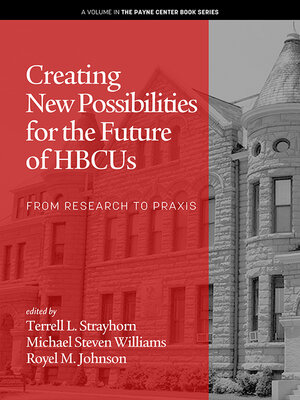Creating New Possibilities for the Future of HBCUs
ebook ∣ From Research to Praxis · The Payne Center Book Series
By Terrell L. Strayhorn

Sign up to save your library
With an OverDrive account, you can save your favorite libraries for at-a-glance information about availability. Find out more about OverDrive accounts.
Find this title in Libby, the library reading app by OverDrive.



Search for a digital library with this title
Title found at these libraries:
| Loading... |
Creating New Possibilities for the Future of HBCUs brings together over 20 higher education scholars with more than 150 years of combined professional experience to critically examine the current contributions of and future directions for our nation's 101 historically Black colleges and universities (HBCUs). The book breaks new ground on Black colleges and offers hope and optimism for charting their future despite shrinking investments in higher education, declining enrollments, and eroding public confidence in the value of a college degree. The book was written to tell the truth, to right (or "[re]write") past wrongs about HBCUs, and to shift our collective gaze from the uncertain, shaky past of a select few to a far more promising future for all based on insights from contemporary empirical research.Each chapter addresses a particular aspect of higher education as it relates to HBCUs, documenting the undeniable legacy of Black colleges, their current challenges and untold successes, blended with findings from recent empirical studies—both quantitative and qualitative—that clearly create new possibilities for the future of HBCUs. This volume was developed to break new ground on often overlooked and understudied terrain in higher education scholarship.Organized into three major sections, the book includes chapters focusing on HBCUs as institutions and a small, but consequential, segment of the higher education enterprise. Section Two consists of 6 chapters addressing the experiences of HBCU students, paying close attention to issues of intersectionality, heterogeneity, and race/ethnicity, to name a few. A third, and final, section turns much-needed attention to HBCU personnel, including campus administrators, college presidents, and faculty. Rich in its coverage of culture, facts, and past history, this new book offers much to those interested in charting new possibilities for the future of HBCUs.






